Varieties and types of primrose
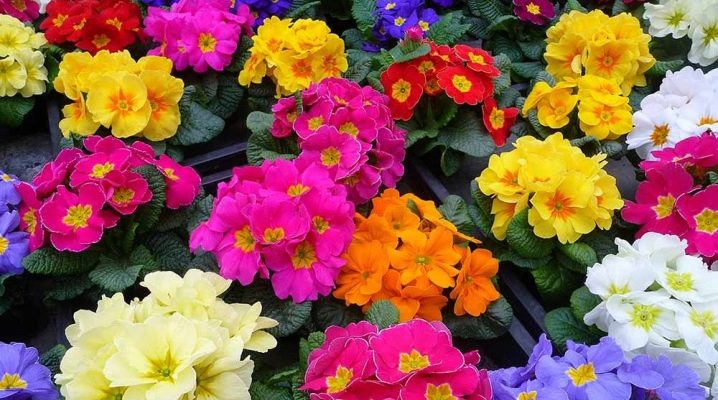
The primrose has gained its popularity among gardeners for its vitality, ease of care, brightness of shades and the fact that it is one of the first to bloom in the garden.
Primroses grow on many territories of our and not only the mainland, in different climatic zones and different conditions. All the more surprising is the fact that many of these species can be found in the same flower bed. Different living conditions have modified primroses, which gave the world the diversity of these plants.
Due to its bright appearance, primrose often becomes a highlight when creating landscaping. And also gardeners love her for opening a flower parade since March.
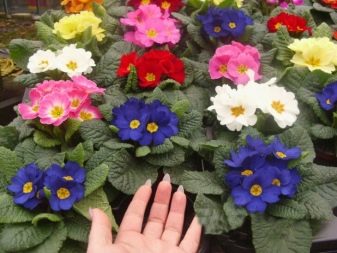
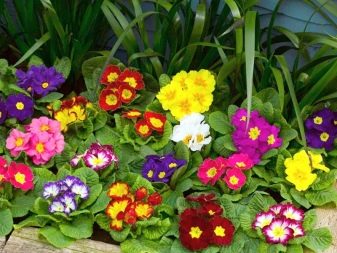
general characteristics
Primrose is a perennial plant. Life expectancy is highly dependent on the specific species. There are species that live only one year, but on average, a primrose bush produces flowers for 3-4 years.
Some species or varieties of plants bloom only in the second year of life. Such nuances need to be clarified before planting a plant. This information is indicated on the seed package.
Primrose has an enviable frost resistance. Some of its species can withstand frosts down to -40 ° C. Hence the love to use primrose as an ornamental plant in the garden.
Any kind or variety of primrose can be easily grown from seeds, so that later they can be planted in a flower bed or in a pot. After all, plants of this species are also good because they are suitable for keeping at home. For its flowering in early autumn, as well as its compact and bright appearance, this plant was to the taste of housewives.
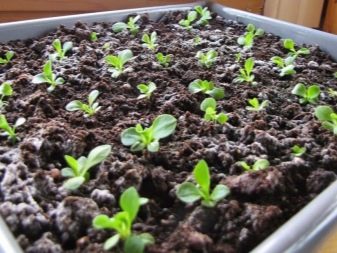

Varieties
Primrose has at least 390 species. All of them have cardinal differences among themselves: in the shape and size of the leaves, in the height of the bushes, the type of inflorescences, the size of flowers and the range of shades in which they can be painted. The more interesting are the combinations of different types of primroses in landscape design.
All types of primroses can be divided into those that bloom in the spring and those that bloom in the summer.

Stemless primrose, she is ordinary primrose
One of the most common types of primroses. This dwarf primrose grows over a vast area: in Western Europe, East Asia and the Middle East, in the European part of Russia, in the Crimea.
An ordinary primrose blooms from April to July. The inflorescences of this species are lush, with a large number of flowers. They can be dyed pale yellow, white, red, pink, or magenta.

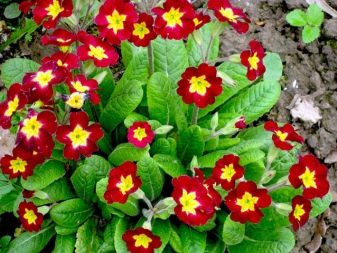
Primula cortex or Altai
The name of the species suggests that this primrose grows in Altai. In addition to Altai, it can also be found in Mongolia and in the mountains of Central Asia.
The cortical primrose has short, light green leaves and long stems that bloom. These stems grow up to 40 cm in height.
Altai primrose blooms from May to June. The flower color is reddish-purple and pink. Flowers grow from the stem, like a corolla, 7-12 flowers per stem.
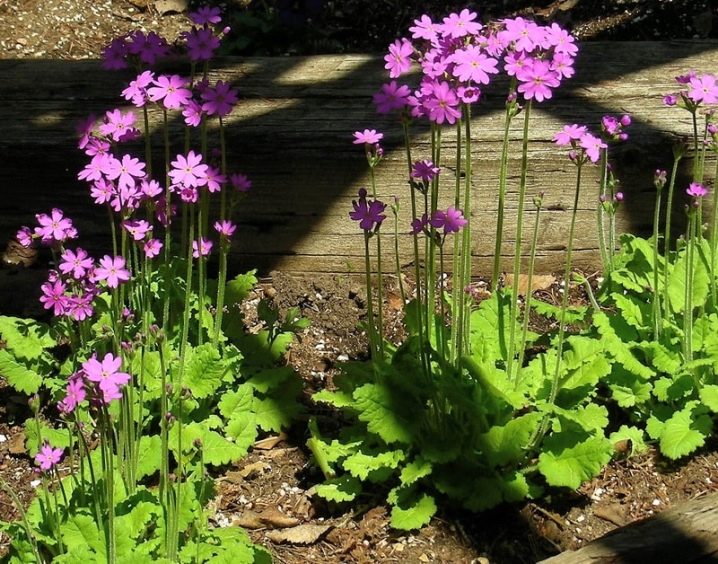
Primula Julia
Originally from the Caucasus, where it grows in the mountains near water - streams and waterfalls. It blooms in spring from April to May.
The species is characterized by small, light green leaves, which are almost round in shape with pronounced veins.
The flowers of Julia's primrose grow one by one. Their color can be described as mauve-mauve. There are yellow spots in the center of the flower.

Large-cup primrose
A short species of primroses, which grows no more than 35 cm in height.He comes from Western and Eastern Siberia. It also grows in the Caucasus.
This species is characterized by long oblong leaves and small elongated yellow flowers that visually resemble bells with another flower, which is darker in tone, inside. In one inflorescence, up to 20 flowers grow and bloom at the same time.
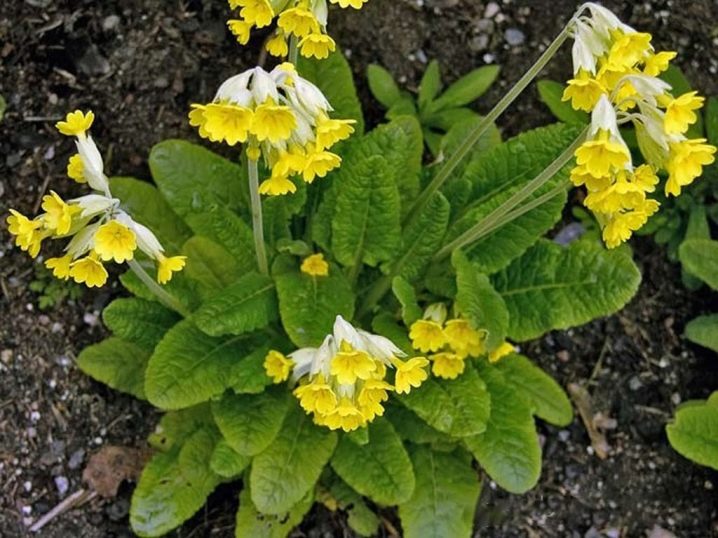
Primula ear, she is a bear's ear
And also meets the name of auricula. The ear primrose grows in the Alps, Carpathians and other mountains of Central Europe. The plant is not tall - no more than 20 cm in height. The leaves of the primrose are short and thick, grayish-green in color.
During flowering, the plant emits a mild, pleasant aroma. 6-7 small flowers grow on one stem. The color is yellow or pink, purple, lilac, with a white heart of the flower.


Polyanthus primrose
Plants of this species live on average 2 years. The species got its name for its early flowering: the polyanthus primrose blooms from May to June.
Plants of this species are distinguished by a wide variety of bright colors. They are red, purple, yellow, and orange.
A distinctive feature of all flowers will be a contrasting core.
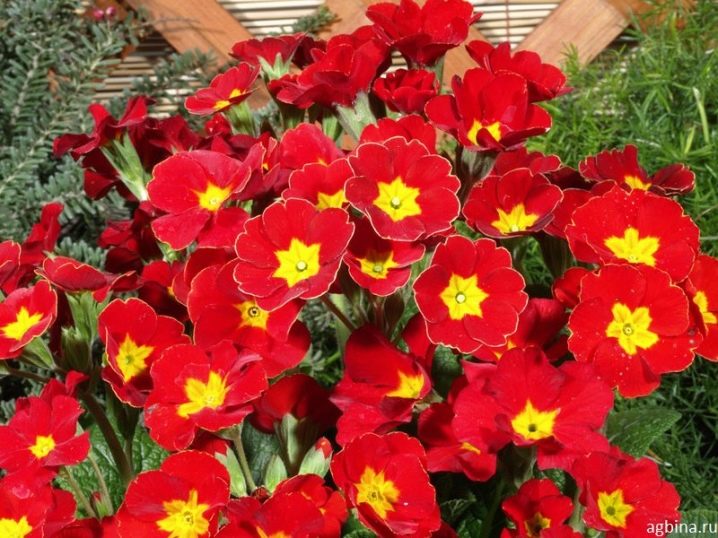
Primula Viale
Atypical representative of the clan from Western China, Tibet and the Himalayas. The Vial primrose inflorescence stands out against the general background - it has the shape of a candelabra. The plant does not differ in particular vitality, usually blooms and lives no more than two years.
This species blooms quite late for primroses - in June-July. Flowers in the inflorescence bloom gradually and change their color during the flowering process. In unopened form, the flowers are red. And when they bloom, they become lilac-purple.
This contrast looks especially impressive when part of the inflorescence has already blossomed, and the other part has not yet.
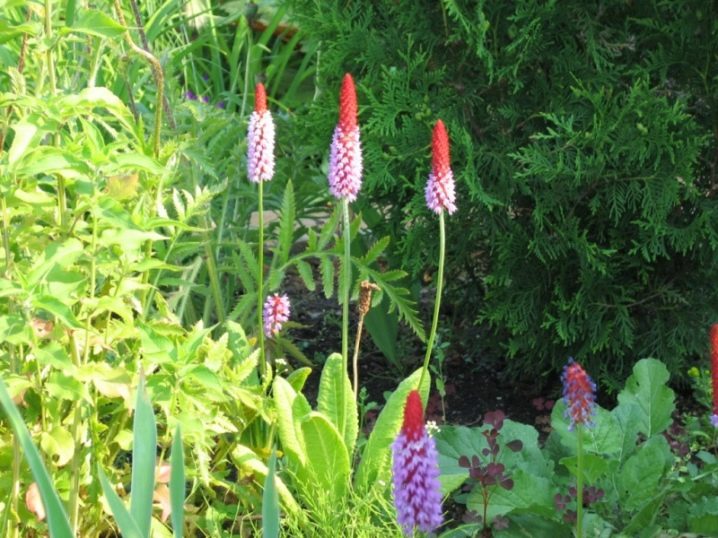
Primula Malakoides or mallow-like
The plant of this species is notable for its short stature (up to 50 cm) with elongated leaves.
Gardeners love this variety for the variety of flower colors. They come in white, red and pink. The core of the flower is necessarily highlighted by a yellow spot. The flowers on the stem grow in tiers, each with up to 8 flowers.
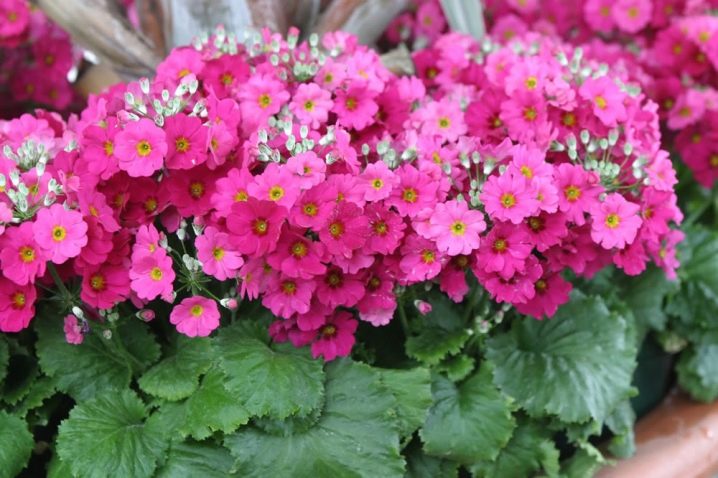
Florinda primrose
This species is a primrose native to Tibet. It grows in the southeastern part of it near water sources. It's because Florinda's primrose loves moisture and feels comfortable when its roots are constantly hydrated.
The plant is quite tall: it can grow up to 120 cm in height. Florinda primrose inflorescence is collected on average from 30 small flowers that look like yellow bells.
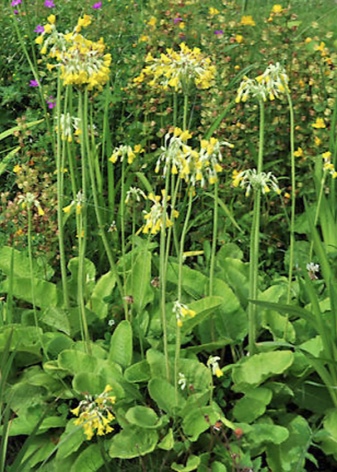
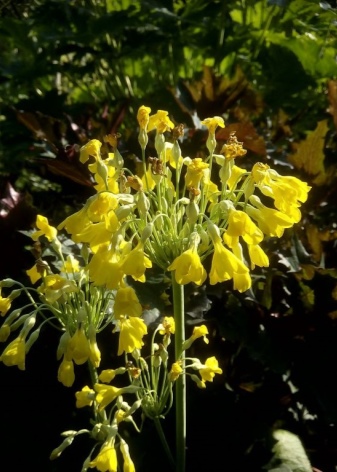
Primula Siebold
The Siebold primrose is common in the humid forests of China, Korea, Russia and Japan.
This species has interesting oblong leaves that have a wavy edge.
The primrose of Siebold blooms in May. Her flowers are lilac-purple in color with a white core. Less common are varieties with white flowers.
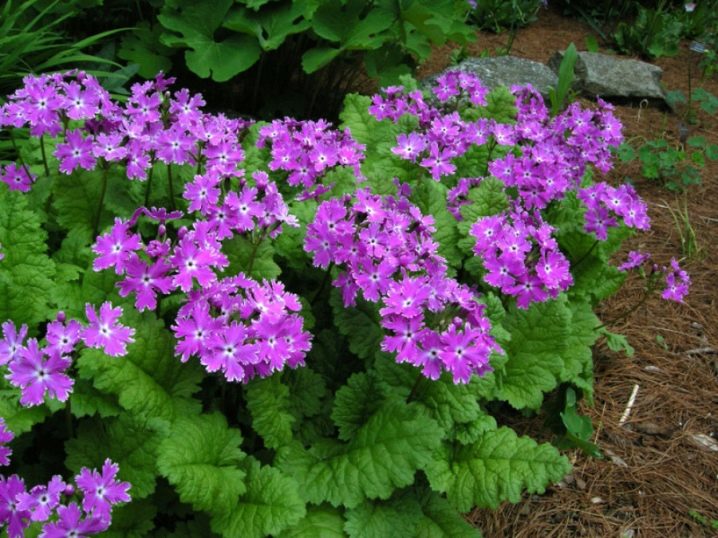
Royal primrose
This species is native to the island of Java, where it is called the flower of the earthquake. The royal primrose blooms before the start of volcanic eruptions, on the slopes of which it grows, even if it is not the period of its flowering. This is due to the physical processes that take place in the soil before the eruption.
The flowers of the royal primrose are lilac or purple with a yellow heart.
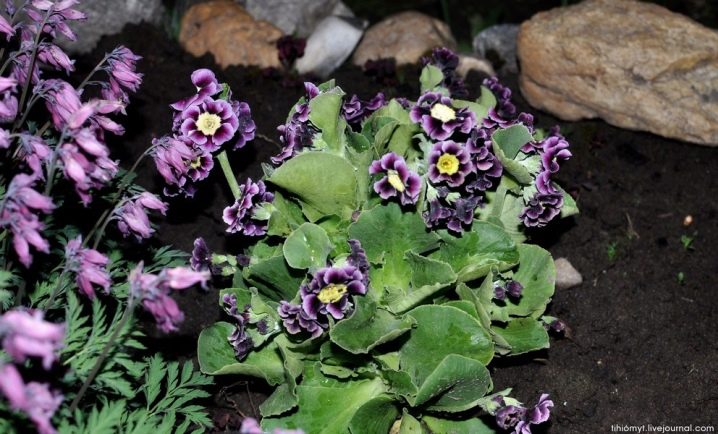
Japanese primrose
It got its name due to the fact that it is common on the island of Kunashir in Japan. Japanese primrose has large, oblong leaves. They reach a length of 25 cm.
A plant of this species blooms in summer for an average of 40 days. Flowers on the stem are arranged in several tiers. The color of the flowers is crimson.
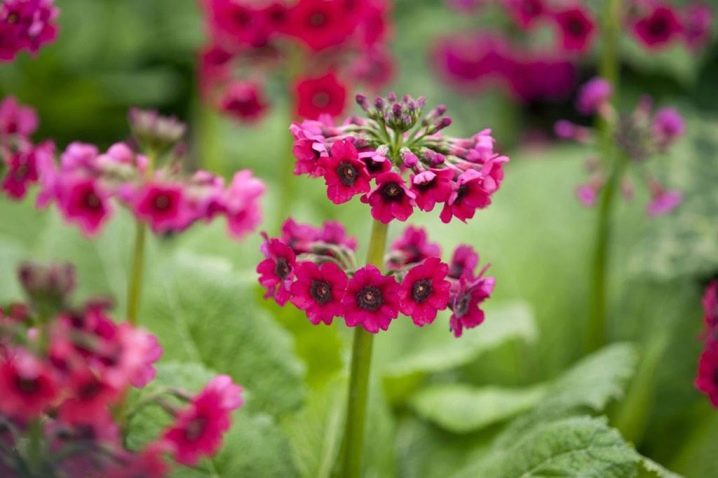
Large-flowered primrose
A popular hybrid among gardeners. A distinctive feature of the varieties of this hybrid is larger flowers than other species. The most popular variety of this type is Francesca.
The flowers of hybrids come in completely different shades: green, purple, and yellow.
Basically, flowers combine 2 or 3 tones that contrast with each other, creating an interesting pattern on the petals.
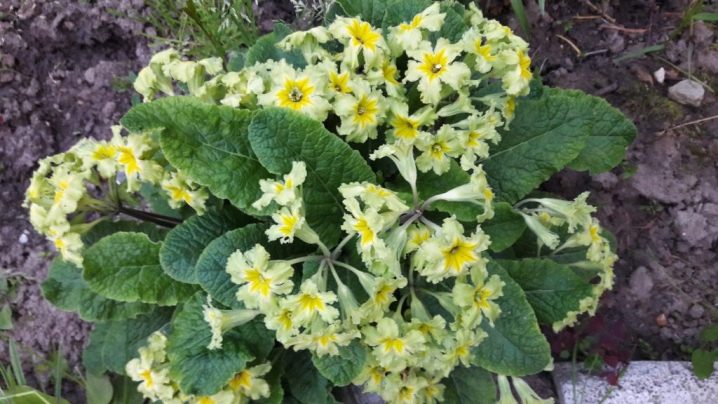
Description of varieties
It is difficult to find publicly available information on the exact number of primrose varieties. Considering that this plant has become popular among flower growers, one can imagine how many different varieties there are now in the world. But there are varieties that are more common among ornamental plants.
Most often, seeds of different varieties are sold as a mixture of different colors. In one package of seeds, several varieties of the same variety are usually mixed. Differences between them in terms of color can only be found when all the bushes bloom.
There are 4 varieties of primroses, which have similar inflorescences and their shades, but there are other differences.
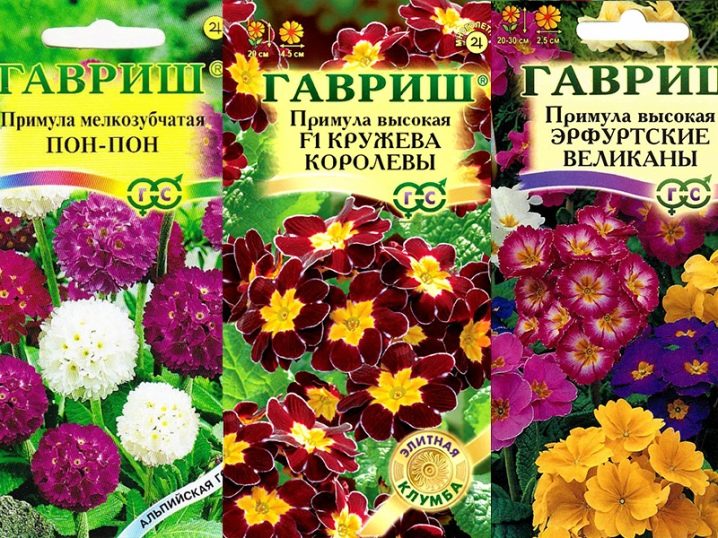
"Matryoshka"
This variety blooms in the earliest spring - in March. The Matryoshka bushes are considered to be dwarf bushes. They do not grow higher than 20 cm. Despite the small size of the bush, the inflorescences grow large and lush. The flowers can be blue, purple, burgundy, yellow or white with a bright yellow core.
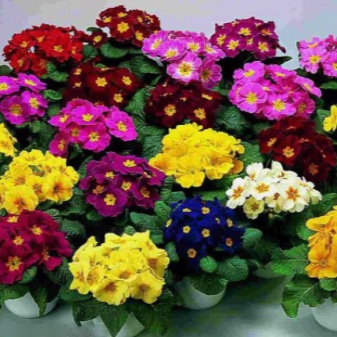
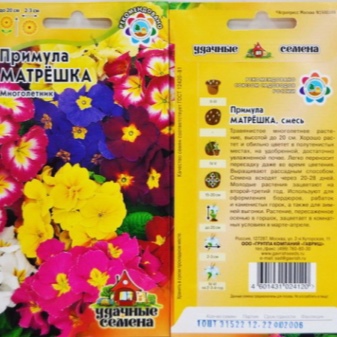
"Colossea"
Blooms in April-May. But the first flowering occurs in the second year of the plant's life. The flowers of this variety are similar to Matryoshka flowers in their colors: pink, purple and yellow flowers with a yellow spot in the center of the flower.
"Colossea" grows taller than "Matryoshka". Its stems can be up to 30 cm long. The leaves are the same, almost round in shape.
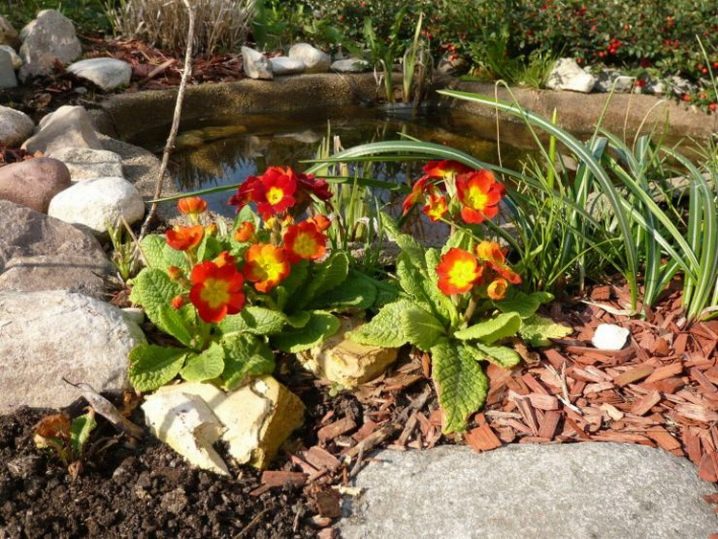
Danova
It grows no more than 14 cm in height, while the leaves can reach a length of up to 10 cm. Danova blooms in early spring. Flowers can be orange, yellow, red, burgundy, blue, white and pink. This variety also has a yellow core of the flower.
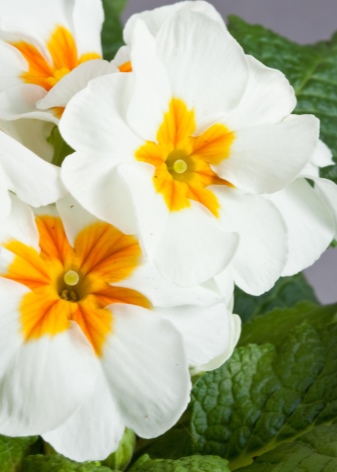

"Crescendo"
This variety is considered to be quite tall - it grows up to 30 cm. "Crescendo" is characterized by an abundance of leaves and a lush inflorescence. At the first glance at the bush, it seems that a cloud of flowers lies on a green pillow.
To the color scheme, the same as that of flowers of other similar varieties, orange-peach is added here. It blooms in early spring - in March-April.
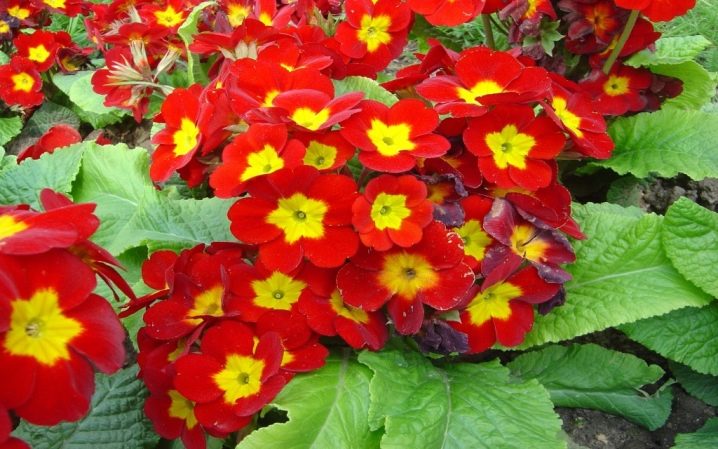
"Select Giant"
Despite its name, this variety grows very small - a maximum of 20 cm. The plant has small oval leaves and a lush inflorescence.
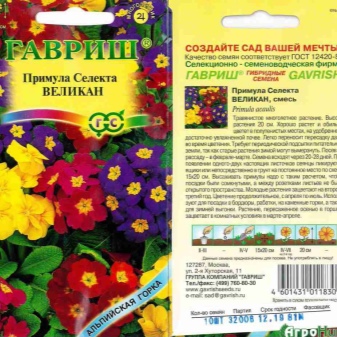
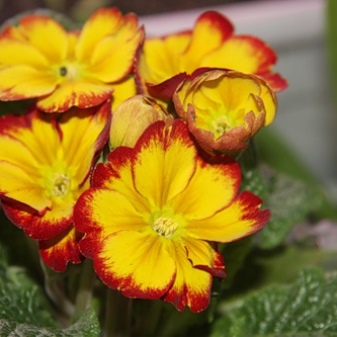
In addition to the varieties listed above, there are several more quite popular ones. They look completely different, and some of them stand quite apart.
"Hector"
In some ways it may remind the same "Matryoshka", but "Hector" is distinguished by a much greater doubleness of flowers. And the color scale of this variety will be richer: among the flowers with the usual yellow core, one can also distinguish solid pink and yellow ones.
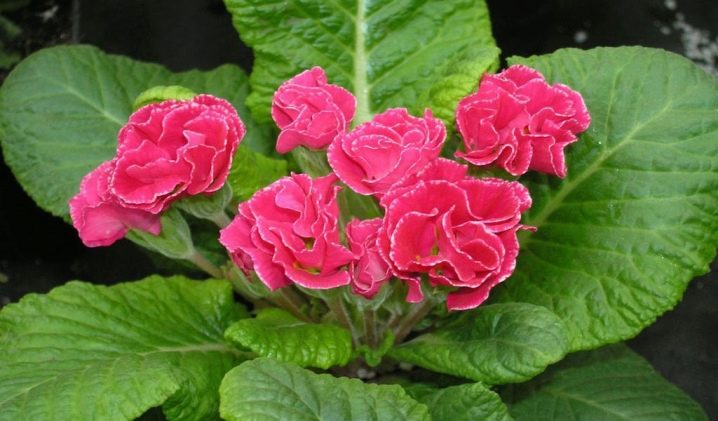
"Blue Jeans"
The variety is of medium height - up to 25 cm. A distinctive feature of Blue Jeans is the large flowers in the inflorescence. One of these reaches up to 6 cm in diameter. The main advantage is color. The white flowers of this variety have many blue veins and a yellow contrasting core. The flower petals really resemble jeans in color.
"Blue Jeans" blooms in March-April.
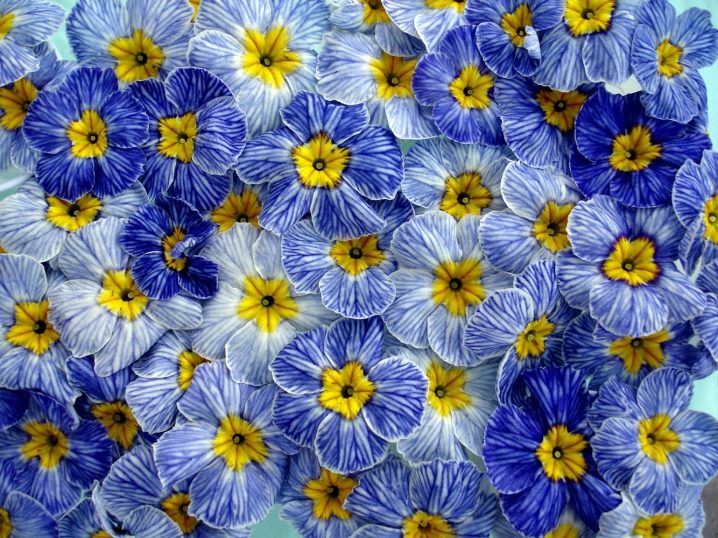
Francesca
This variety blooms in May and June, reaching a height of up to 30 cm. But the main advantage of "Francesca" can be called light green flowers with a yellow spot in the center, which contrast with the dark green leaves. The plant blooms magnificently, from afar resembling hydrangea inflorescences.
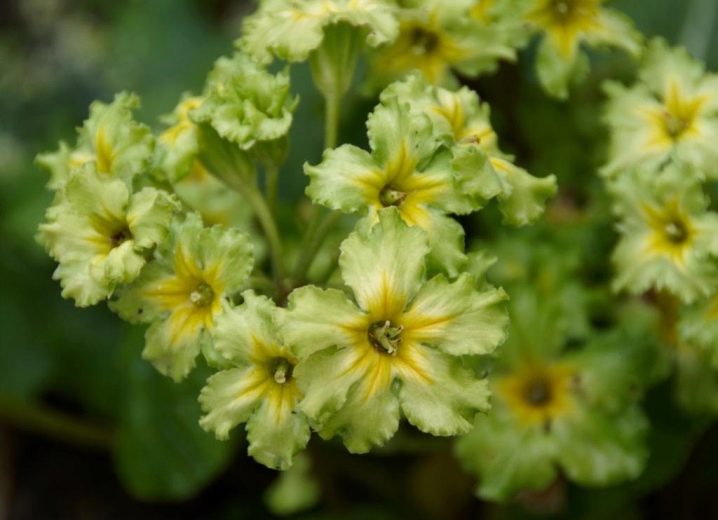
"Noverna deep blue"
Atypical representative of the genus. Primrose of this variety is also called capitate. The thing is that inflorescences in plants of the "Noverna deep blue" variety are located at the very top of a thick stem and resemble spherical heads. The color of the flowers is purple-violet.
Plants of this variety bloom quite late for primroses - in June-August.
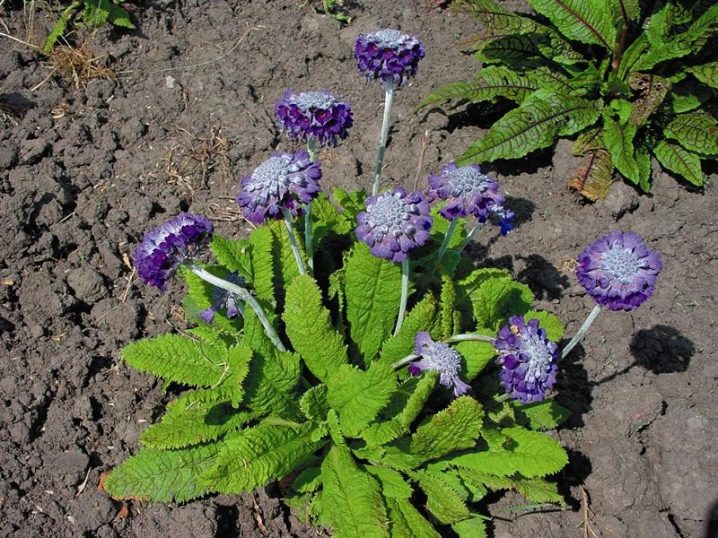
Landscape use
Primroses are just versatile for use in landscaping. Plants of this genus most often bloom earlier than others, opening the blooming period of the entire garden in early spring. And if you use several types of primroses on one flower bed, you can achieve the effect of an endlessly blooming flower bed from March to almost autumn.
Primroses do great in flower pots or pots outside. This allows you to use them pointwise in private houses: to put them in those places of the site where they will become bright accents.
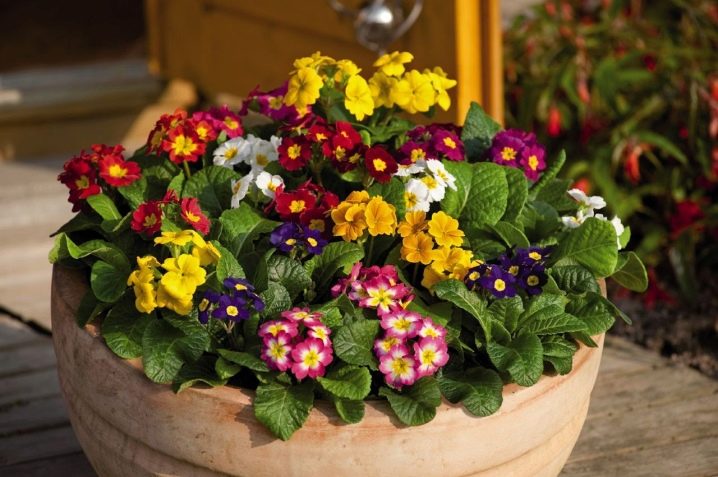
Primroses are often used to create alpine slides on the site in combination with other plants and stone compositions. Dwarf flower species add bright shades to the composition and do not stand out from the overall low concept.
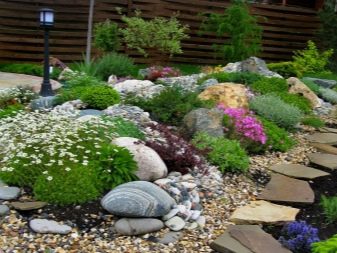
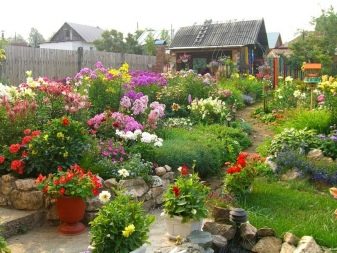
Primrose is often planted along walls, fences, curbs or paths - in open ground or in separate boxes. Such stripes of flowering bushes help to create visually highlighted contrasting geometric lines in the landscape.


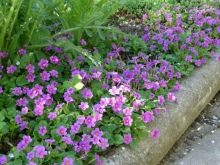
In the flower beds, primroses coexist with other flowering and non-flowering plants. The combination of various representatives of the flora helps gardeners to achieve the contrast of shades in the flower bed, as well as to beat different plant heights. Most often, in flower beds, you can see a combination of primroses with daffodils, tulips and other plants with inflorescences in the form of a ball, umbrella or corolla.
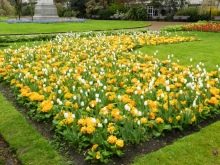


See below for more details.







































































































The comment was sent successfully.